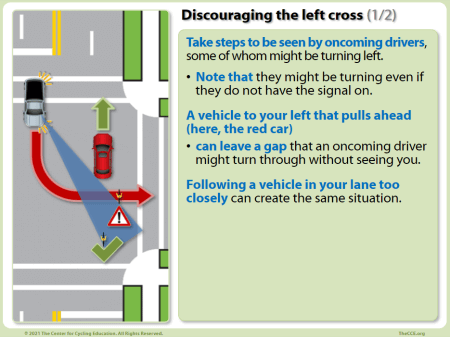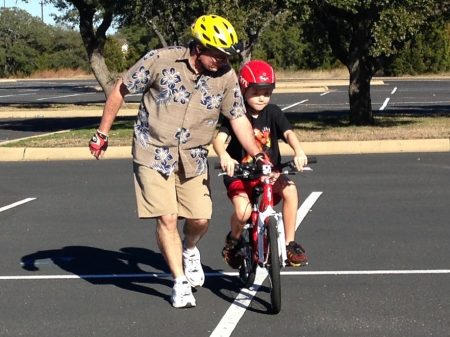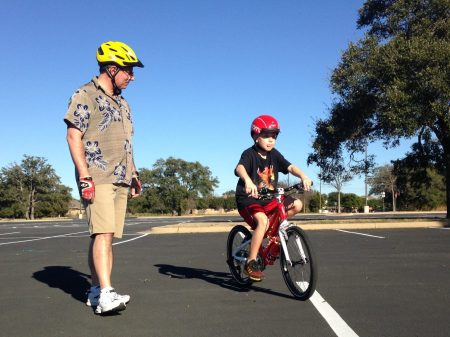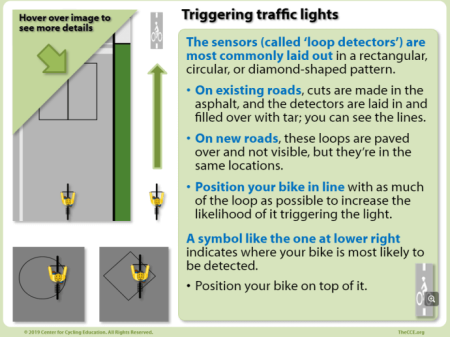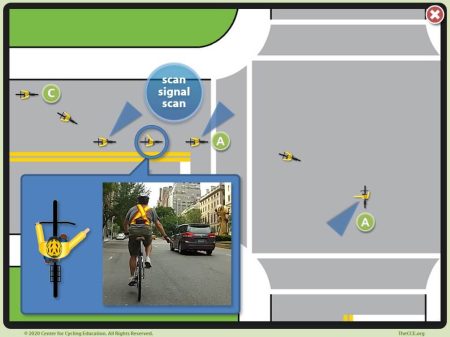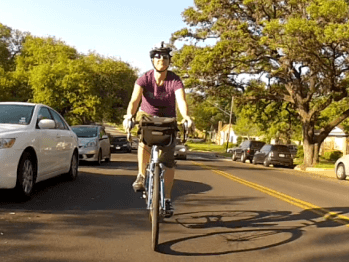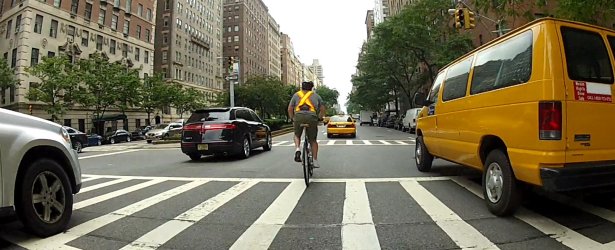
Know when to move left when you’re riding your bike.
Contrary to a common misconception, cyclists do not have to (and are not recommended to) ride as far to the right side of the road as they can. There are many good reasons for this.
But what does the law say about this?
The laws in the majority of US states and Canadian provinces indicate that a cyclist on the road has the same rights and duties as a driver of a vehicle.
Cyclists are generally required to ride ‘as near as practicable’ to the right side of the highway. Note that it does not say ‘as far to the right as possible.’ A significant body of case law has shown that a proper interpretation is "as far to the right as is safe and reasonable."
Some states provide important details regarding a cyclist’s right to ride further left for safety. For example, here is an excerpt from the Texas Transportation Code:
Sec. 551.103. OPERATION ON ROADWAY.
(a) Except as provided by Subsection (b), a person operating a bicycle on a roadway who is moving slower than the other traffic on the roadway shall ride as near as practicable to the right curb or edge of the roadway, unless:
- the person is passing another vehicle moving in the same direction;
- the person is preparing to turn left at an intersection or onto a private road or driveway;
- a condition on or of the roadway, including a fixed or moving object, parked or moving vehicle, pedestrian, animal, or surface hazard prevents the person from safely riding next to the right curb or edge of the roadway; or
- the person is operating a bicycle in an outside lane that is:
- less than 14 feet in width and does not have a designated bicycle lane adjacent to that lane; or
- too narrow for a bicycle and a motor vehicle to safely travel side by side.
(b) A person operating a bicycle on a one-way roadway with two or more marked traffic lanes may ride as near as practicable to the left curb or edge of the roadway.
Following the law safely
There is the occasional driver who may see a cyclist riding further from the curb, or edge of the road, as being belligerent. Cyclists have a right to be on the road, and riding further from the edge is simply a matter of safety—for the cyclist, for motorists and for other road users.
If you were riding on the road and were trying to hide from traffic, would you ride further to the right, or further to the left? In courses for all ages, we constantly get a response of “you’d ride further to the right”. Do we want to hide from traffic? Here’s a hint: the vast majority of collisions occur when a driver simply does not see a cyclist.
Riding further left makes a cyclist more visible to drivers in front and behind, reducing the likelihood of a collision.
Cyclists have just as much right — no more and no less — to be on the roadway as do motorists. They also have a right to an expectation of being treated safely by others.
How close to (or far from) the side of the road we ride to be safe depends on a number of elements, which are covered in detail in our online cycling courses.
